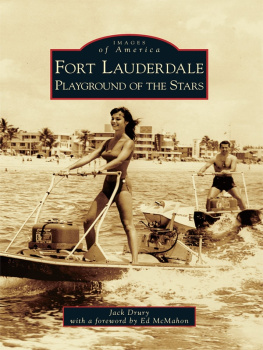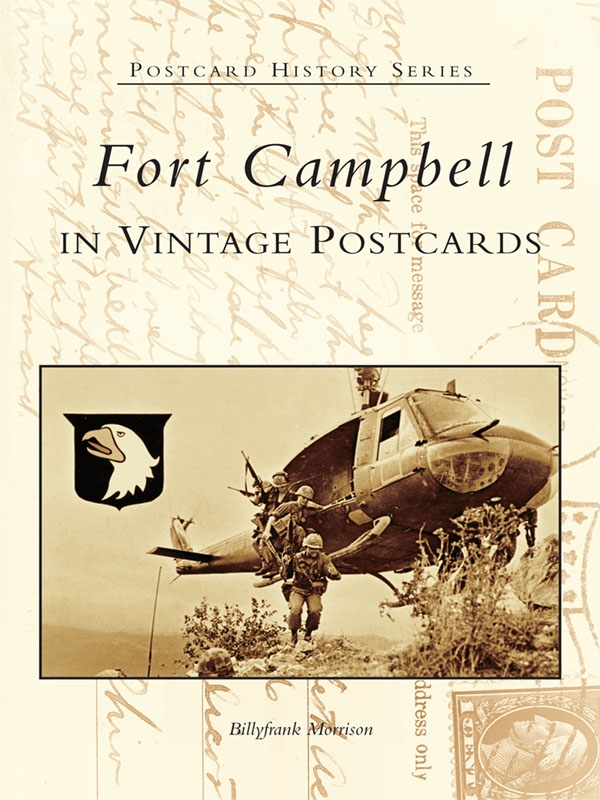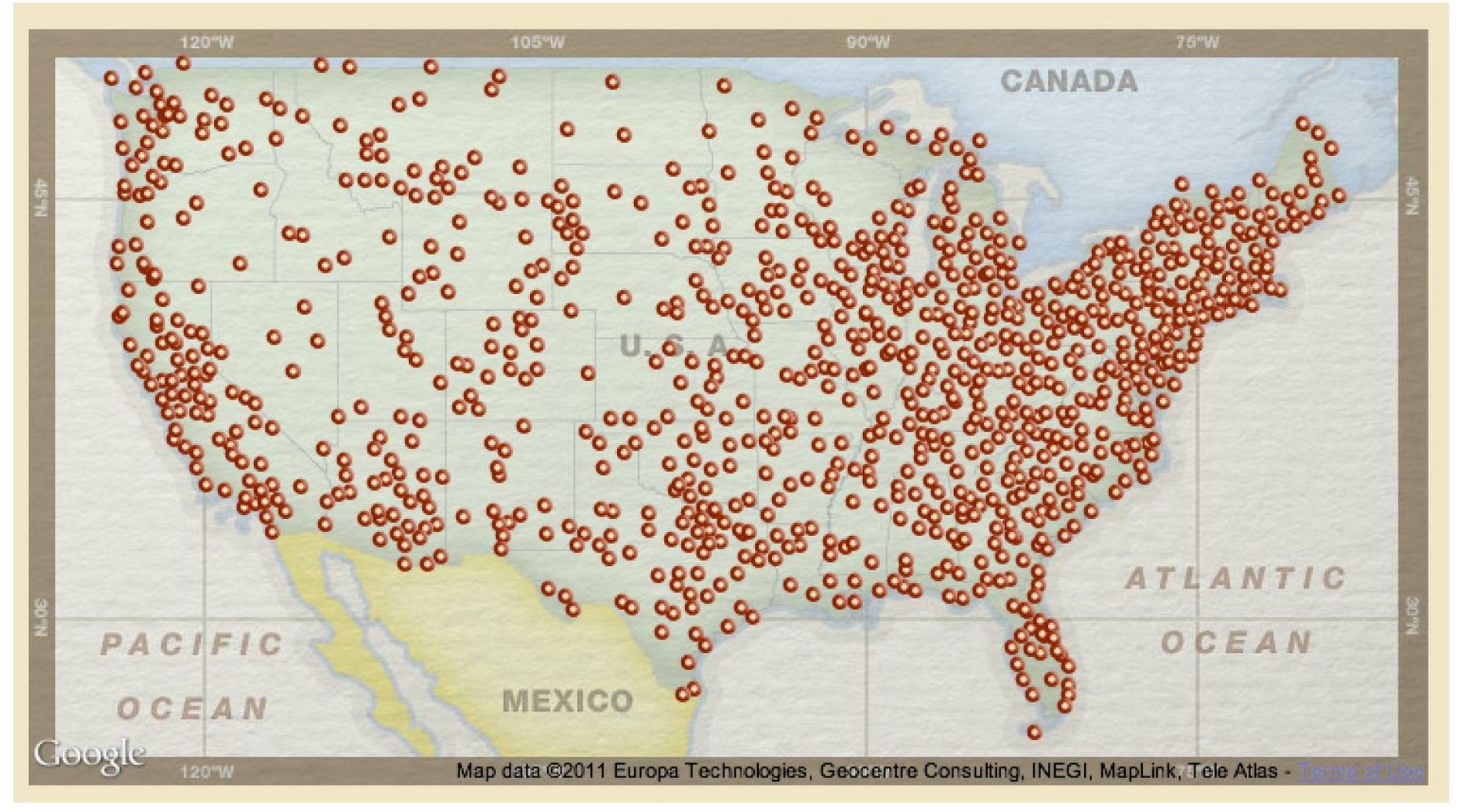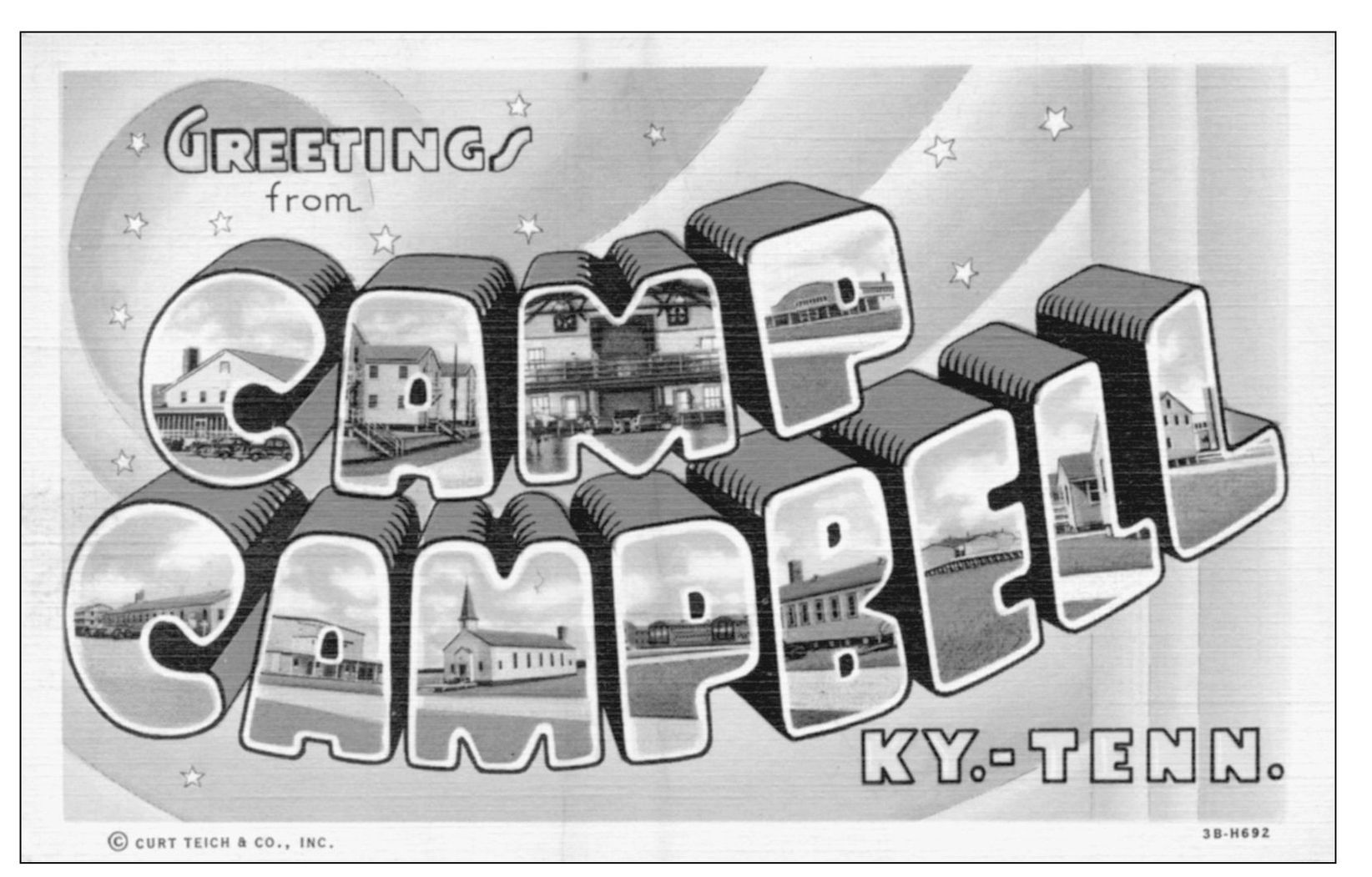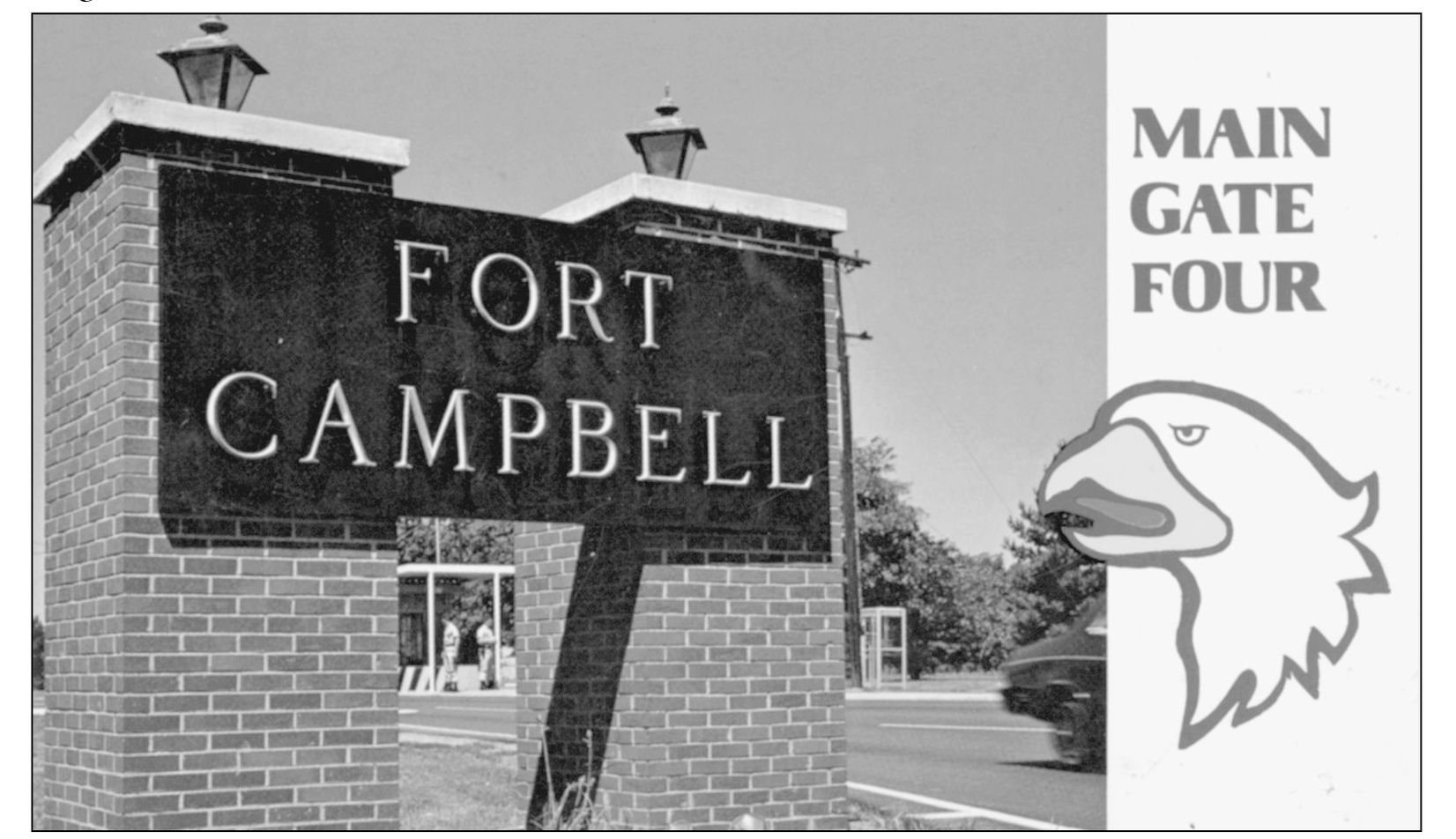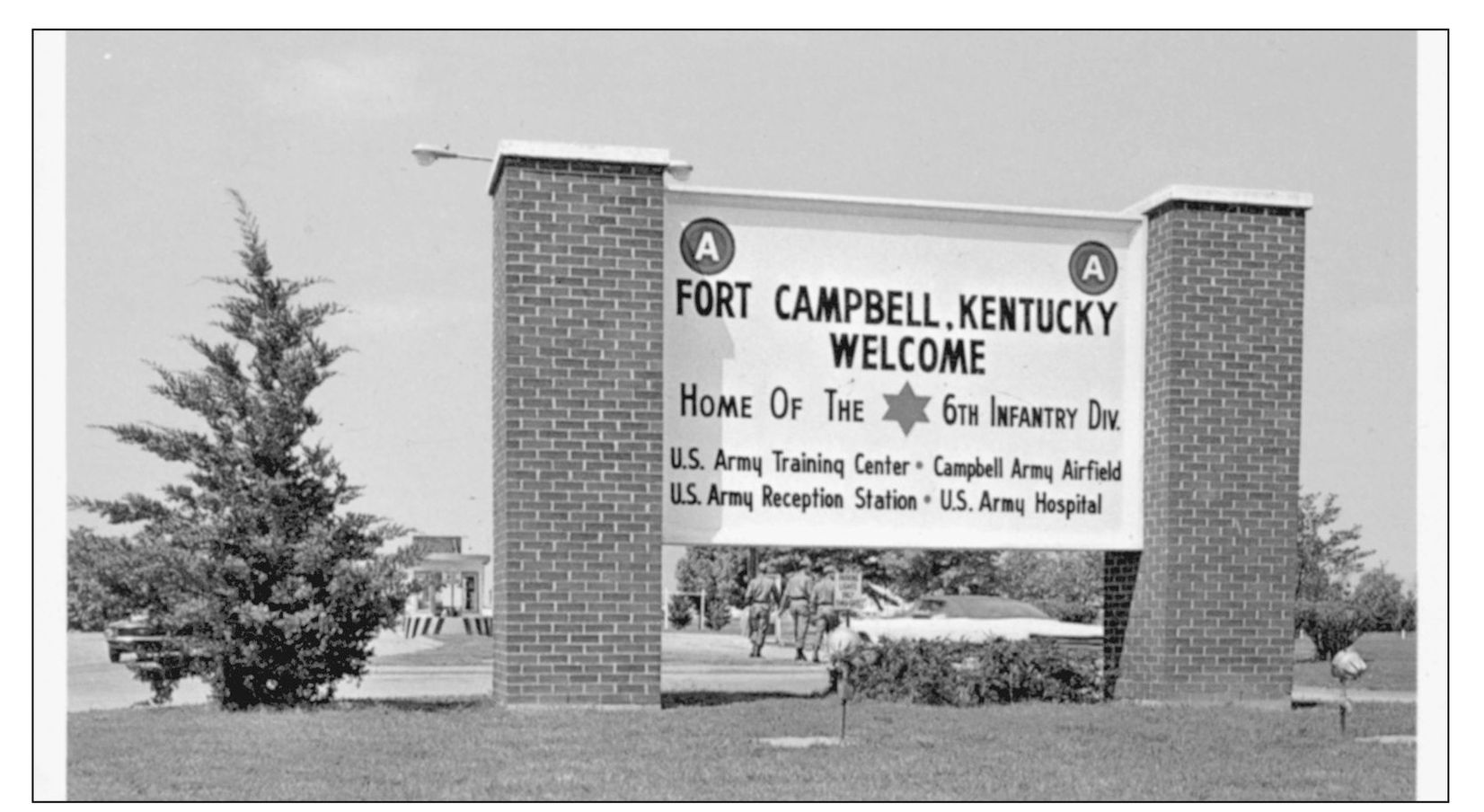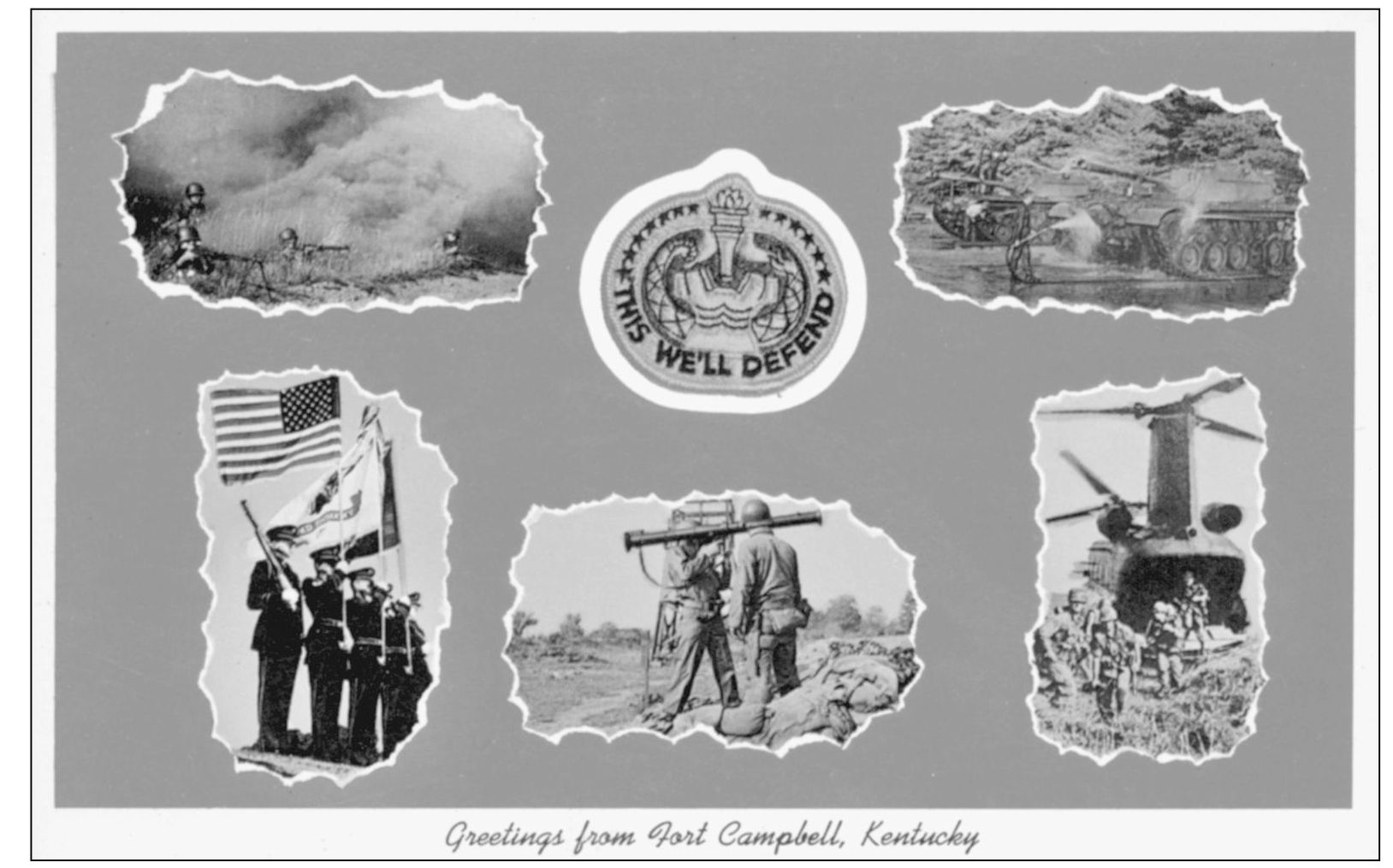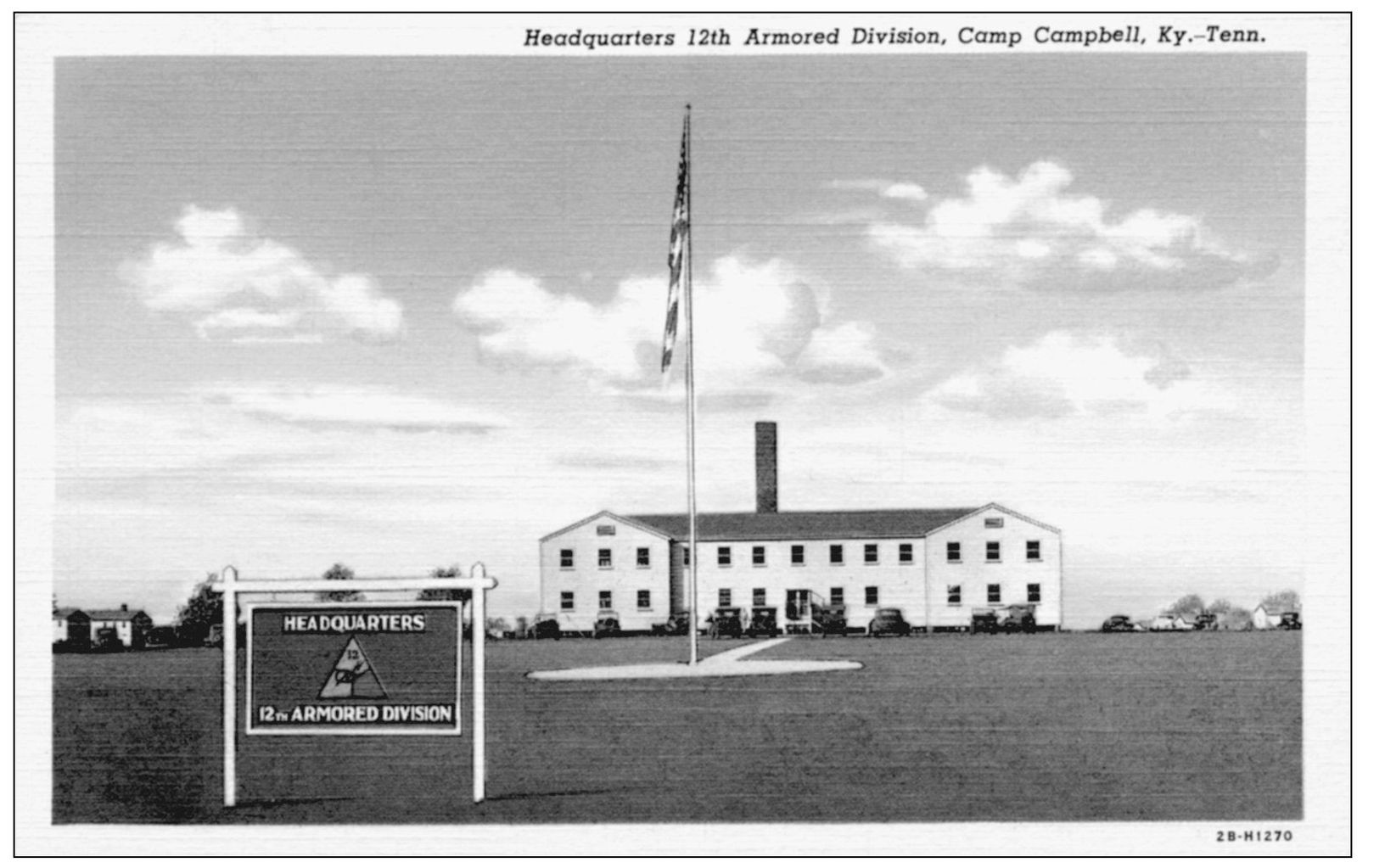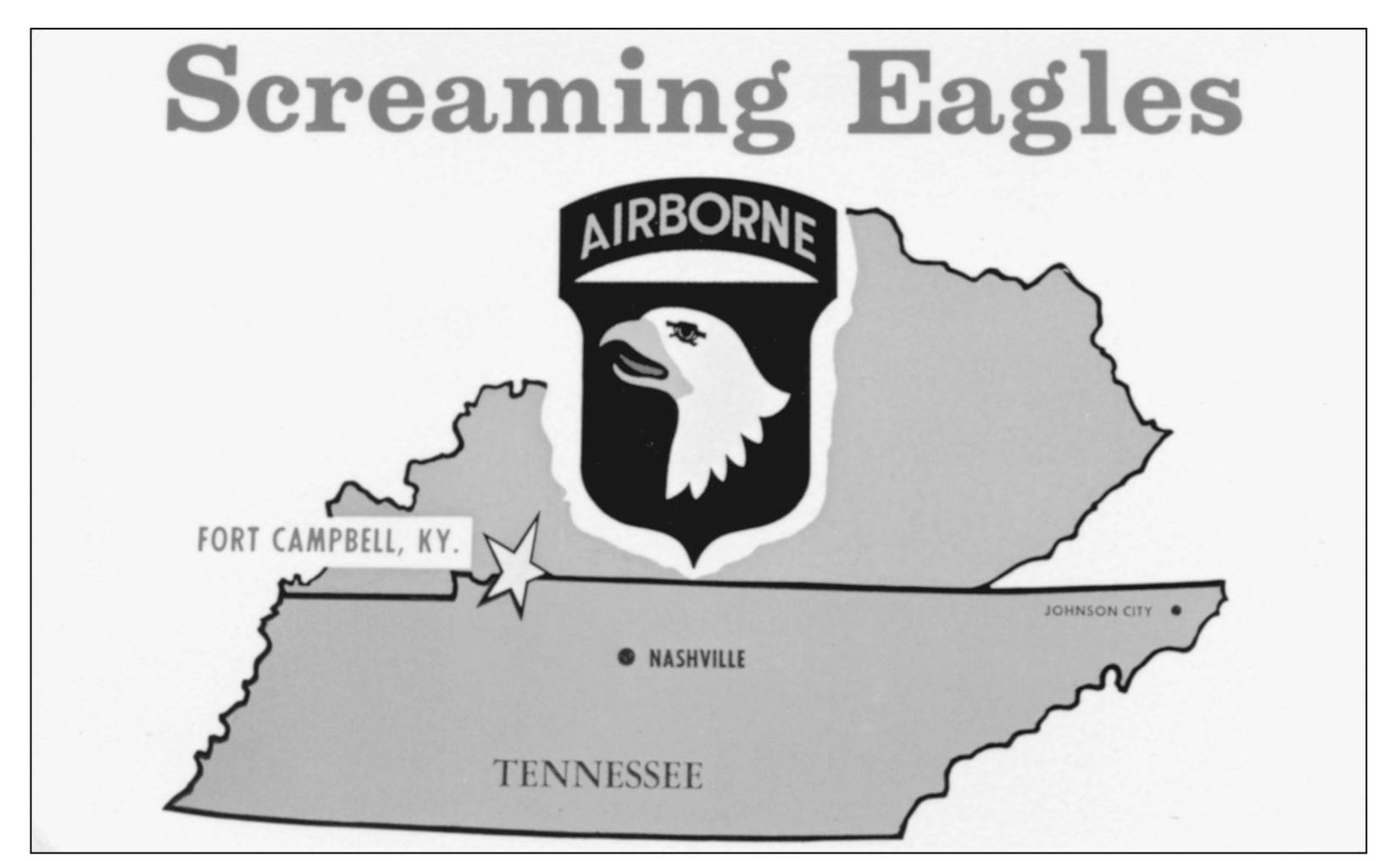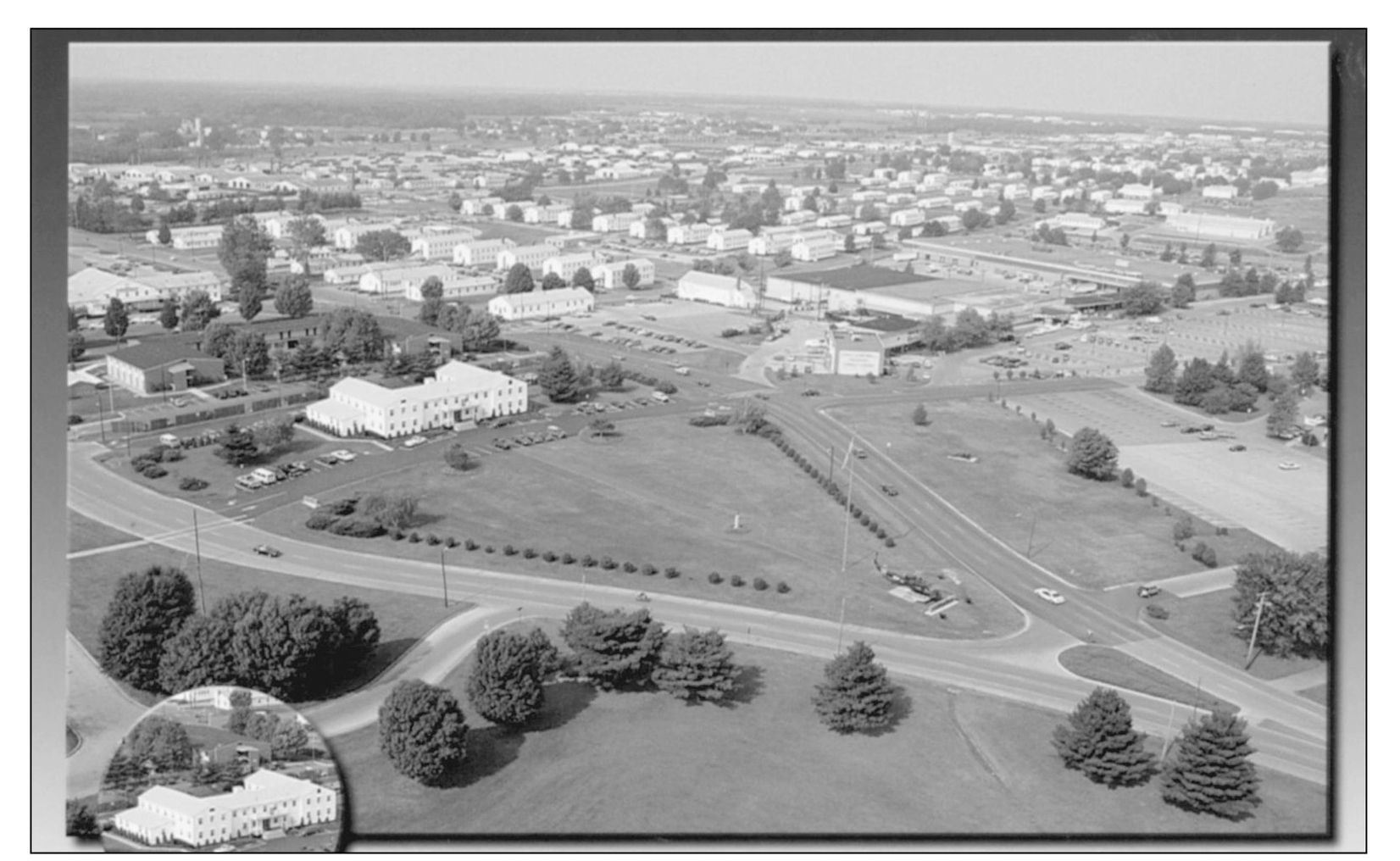One
WELCOME TO CAMP/FORT CAMPBELL, KENTUCKY
Camp Campbell, Tennessee, was named in honor of Brig. Gen. William Bowen Campbell, once a colonel of the Bloody First Tennessee Volunteers. The camp was later re-designated Camp Campbell, Kentucky. In 1950, it became a permanent post and was named Fort Campbell, Kentucky. This large letter postcard contains a small image of Camp Campbell in each of the letters (the M in Camp is a picture of the interior of Service Club No. 2).
Clockwise from the left are a paratrooper exiting a C-47, a convoy of antiquated tanks, a U.S. Air Force Mustang and B-25, a big gun followed by a half-tracked vehicle, and an M-151 with an artillery piece in tow. This card was sent by Elmira to her folks in New Ulm, Minnesota, and states, Ill go to the camp again today. He didnt come in last night. These long walks sure roll around fast.
In the summer of 1942, the initial cadre (20 strong) arrived from Fort Knox. During World War II, the 12th, 14th, and 20th Armored Divisions, Head Quarters (HQ) IV Armored Corps, and 26th Infantry Division were at Campbell. The 8th Armored Division (Thundering Herd) trained at Camp Campbell in 1943 and 1944, and during a short 63 days in World War II, the 8th Armored Division lost 260 killed and 1,015 wounded while capturing 35,000 POWs.
The 101st Airborne Division, which activated August 16, 1942, at Camp Claiborne, Louisiana, under Gen. William C. Lee, would make Fort Campbell its home. This sign shows it has been home to many commands. Three soldiers in BDUs (battle-dress uniforms) can be seen returning from Jewel Bricks Mens Store. Jewel was a Clarksvillian married to Gen. William H. Birdsong Jr., who retired while commanding general (CG) in 1972. Birdsong formed the 101 Club in 1973.
Clockwise from the top left are a rifle squad training, an unidentified patch, tanks being washed after tactical operations, troops disembarking from a CH-47, bazooka training, and presentation of colors. Some of these views can also be found on individual cards. Narrative on the back of the cards locates the post 57 miles NW of Nashville, 7 miles N of Clarksville, and 15 miles S of Hopkinsville, KY.
This card was printed in the mid-1960s and shows, clockwise from the top left, Post HQ, a Third Army patch, the new post chapel, the administrative building for the old hospital, paratroopers, and a U.S. Air Force C-124.
This linen postcard shows the HQ for the 12th Armored Division assigned to Camp Campbell during World War II. One unit in the 12th was the 152nd Armored Signal Company, which was activated here in September 1942. Today, everything but the HQ building has changed. All post decisions are made from here, including the one to name Fort Campbell High School sports teams for General Pratts glider, the Fighting Falcon.
The back of this card states, The Screaming Eagles returned to Fort Campbell from Vietnam in 1972. The date was April 6, and they were welcomed back by Vice Pres. Spiro Agnew and army Chief of Staff William C. Westmoreland. In the upper right-hand corner of the Tennessee outline is Johnson City. Why Johnson City, of all Tennessee cities, is shown is a mystery.
Camp Breckinridge at Morganfield, Kentucky, was home to the 101st Airborne Division during the early 1950s. The Screaming Eagle could be found on the two stone gates at the main entrance. The U.S. Army Signal Corps printed this and other cards of Camp Breckenridge.
Fort Campbell is a sprawling post that serves as home to the 101st and other major tenant units, such as 5th Special Forces Group (Airborne); 160th Special Operations Aviation Regiment (Airborne); U.S. Army Medical Activity, Tennessee Valley District; Veterinary Command; and U.S. Dental Activity. There are a number of smaller tenant units such as the 902nd Military Intelligence Group.






